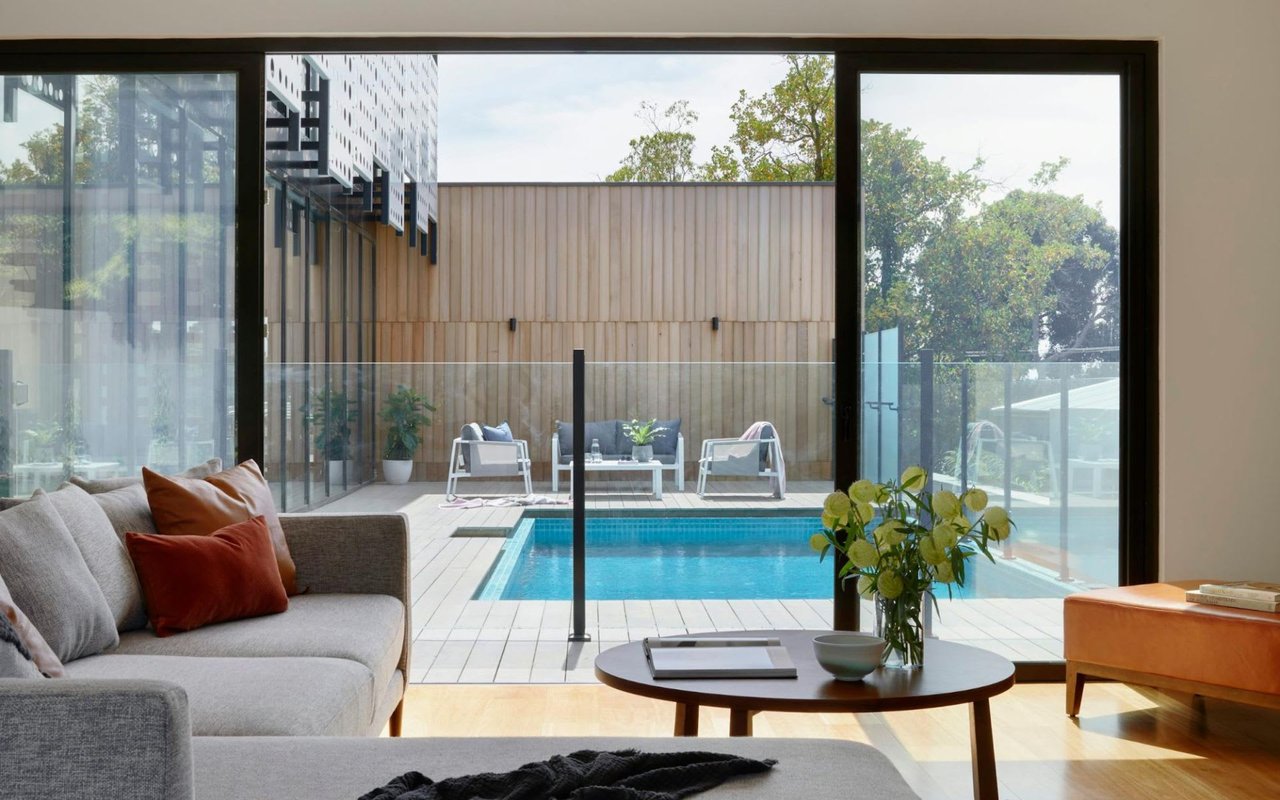Remodeling your home is an exciting opportunity to breathe new life into your space, but it can also be a complex process. Whether you are revamping one room or undergoing a full home renovation, planning is essential for ensuring success and optimal outcomes.
From initial design ideas to the final finishes, every step requires careful consideration and focused decision-making. With the right approach, you can transform your Thousand Oaks home into a place that reflects your personal style and meets your functional needs.
Whether you're taking on a DIY project or working with a professional team, these insights will ensure your renovation is well-executed and leads to the desired result.
Stay Focused on Your Goals
The first step in any successful home renovation is having a clear vision of what you want to achieve. This goes beyond simply knowing which rooms you want to remodel. Take the time to consider your objectives for the space. What function will it serve? Are you aiming for a certain aesthetic? Whether you're striving for a modern design, a cozy atmosphere, or an open-concept layout, establishing this vision will provide direction for the entire project.
Having a vision also helps guide the decision-making process. It becomes easier to choose materials, colors, and design elements when you have a clear picture of the final outcome.
Consider creating a mood board or gathering inspiration from magazines and online platforms. This will help you articulate your preferences and allow designers and contractors to better understand your dream space.
Having a vision also helps guide the decision-making process. It becomes easier to choose materials, colors, and design elements when you have a clear picture of the final outcome.
Consider creating a mood board or gathering inspiration from magazines and online platforms. This will help you articulate your preferences and allow designers and contractors to better understand your dream space.
Set a Realistic Budget
One of the most important aspects of any home renovation is budgeting. It's easy to get carried away with ambitious design ideas, but setting a realistic budget early on is crucial to avoid overspending. Begin by determining how much you’re willing to invest in the renovation. Consider the extent of the project, the quality of materials you want to use, and whether you’ll be hiring professionals.
Be sure to allocate a portion of your budget for unexpected expenses. Renovations often come with surprises, whether it's hidden structural issues, price changes in materials, or additional labor costs. Having a buffer—usually around 10-15% of your total budget—ensures that you can handle any unexpected expenses without stress.
Be sure to allocate a portion of your budget for unexpected expenses. Renovations often come with surprises, whether it's hidden structural issues, price changes in materials, or additional labor costs. Having a buffer—usually around 10-15% of your total budget—ensures that you can handle any unexpected expenses without stress.
Prioritize Essential Upgrades
When renovating, it can be tempting to splurge on high-end fixtures and luxury finishes galore, but it’s important to focus on essential upgrades first. Start with any repairs or updates that are critical to the functionality of your home. This might include fixing the wiring, addressing plumbing issues, or replacing old windows.
By prioritizing the fundamentals, you can ensure your home is not only visually appealing but also efficient and functional. Once these essentials are addressed, you can begin adding aesthetic enhancements and alluring design features that will elevate the overall look and feel of the space.
By prioritizing the fundamentals, you can ensure your home is not only visually appealing but also efficient and functional. Once these essentials are addressed, you can begin adding aesthetic enhancements and alluring design features that will elevate the overall look and feel of the space.
The Long-Term Perspective
While it’s easy to focus on immediate results, successful renovations take into account the long-term impact of design choices. Choose materials and finishes that not only look great now but also stand the test of time.
For example, opt for durable countertops, flooring, and cabinetry that can handle daily wear and tear. Likewise, consider energy-efficient windows and appliances that will save you money on utility bills in the long run.
Also, think about future needs when designing spaces. For instance, if you’re planning a bathroom remodel, adding features like a walk-in shower or double vanities can increase the usability and appeal of the space for years to come.
For example, opt for durable countertops, flooring, and cabinetry that can handle daily wear and tear. Likewise, consider energy-efficient windows and appliances that will save you money on utility bills in the long run.
Also, think about future needs when designing spaces. For instance, if you’re planning a bathroom remodel, adding features like a walk-in shower or double vanities can increase the usability and appeal of the space for years to come.
Plan for Functionality and Flow
Designing a beautiful space is important, but it should never come at the expense of functionality. Whether you’re remodeling a kitchen, bathroom, or living room, consider how the space will be used on a daily basis. Think about the flow of movement and the placement of furniture, appliances, and fixtures. In kitchens, for example, the “work triangle” between the stove, sink, and refrigerator should be designed for ease of use. In living spaces, ensure that seating arrangements encourage conversation.
Incorporating smart storage solutions is another way to enhance functionality. Built-in shelves, cabinetry, and hidden storage can help keep clutter at bay while maintaining a clean, organized appearance. A well-thought-out design that prioritizes both aesthetics and practicality will ensure that your newly remodeled space is enjoyable and easy to live in.
Incorporating smart storage solutions is another way to enhance functionality. Built-in shelves, cabinetry, and hidden storage can help keep clutter at bay while maintaining a clean, organized appearance. A well-thought-out design that prioritizes both aesthetics and practicality will ensure that your newly remodeled space is enjoyable and easy to live in.
Choose Materials That Align With Your Vision
Selecting the right materials is an essential phase of any renovation, as they set the tone for the entire space. When choosing materials, consider their durability, maintenance requirements, and aesthetic appeal. For example, hardwood floors provide a classic, timeless look, but they may require more maintenance than other flooring options. Similarly, quartz countertops are low-maintenance and resistant to stains, making them a popular choice for kitchens and bathrooms.
Keep your overall vision in mind when making material selections. If you’re aiming for a modern, sleek look, opt for materials like polished concrete, stainless steel, and glass. For a more traditional or rustic feel, natural stone, wood, and textured fabrics may be better suited to your design scheme.
Keep your overall vision in mind when making material selections. If you’re aiming for a modern, sleek look, opt for materials like polished concrete, stainless steel, and glass. For a more traditional or rustic feel, natural stone, wood, and textured fabrics may be better suited to your design scheme.
Think About Lighting
Lighting is one of the most commonly overlooked aspects of renovations, but it can notably impact the final look and feel of a space. Start thinking about lighting early in the design phase, and make sure it complements your overall vision. Different types of lighting, such as task, ambient, and accent lighting, serve different purposes and can drastically change the mood of a room.
In kitchens, under-cabinet lighting can add style and functionality, while recessed lighting in living areas creates a warm and inviting atmosphere. Don’t forget to leverage natural light by placing windows strategically and using light-reflecting materials to make spaces feel brighter and more open.
In kitchens, under-cabinet lighting can add style and functionality, while recessed lighting in living areas creates a warm and inviting atmosphere. Don’t forget to leverage natural light by placing windows strategically and using light-reflecting materials to make spaces feel brighter and more open.
Incorporate Green Building Practices
Sustainability has become an increasingly important consideration in home renovations. Incorporating green building practices into your remodel can reduce your environmental footprint while improving the efficiency and value of your Thousand Oaks home. Consider using eco-friendly materials, such as recycled wood and bamboo, along with low-VOC paints. Energy-efficient appliances and water-saving fixtures are also savvy choices that benefit both the environment and your wallet.
Ultimately, a successful home renovation requires thoughtful planning, clear communication, and a willingness to adapt along the way. The effort you invest will result in a wonderfully transformed space that you can enjoy for years to come. Connect with Madge & Hamilton Group to get started in Thousand Oaks real estate.
Ultimately, a successful home renovation requires thoughtful planning, clear communication, and a willingness to adapt along the way. The effort you invest will result in a wonderfully transformed space that you can enjoy for years to come. Connect with Madge & Hamilton Group to get started in Thousand Oaks real estate.




